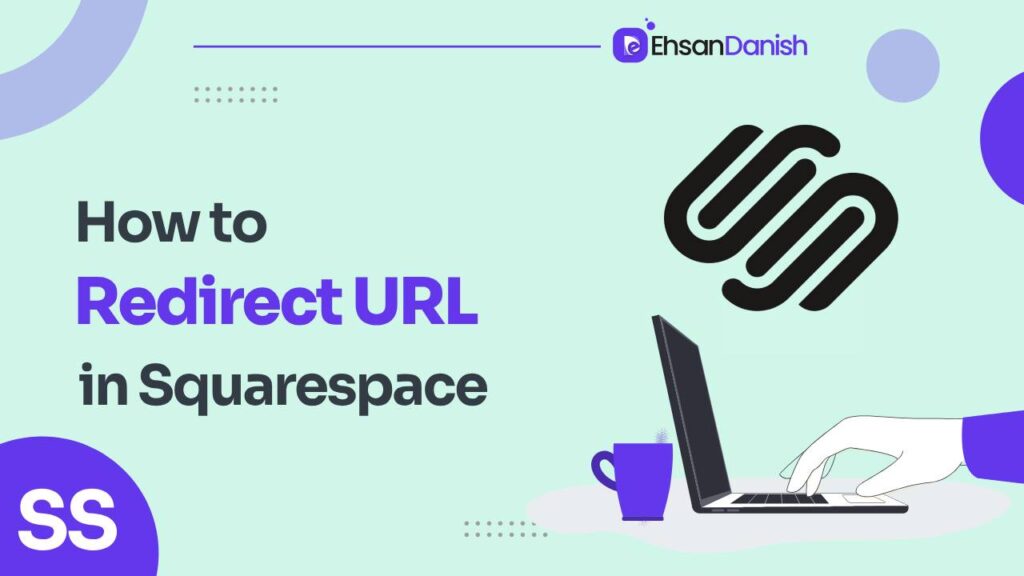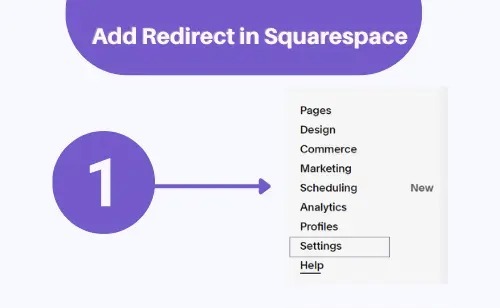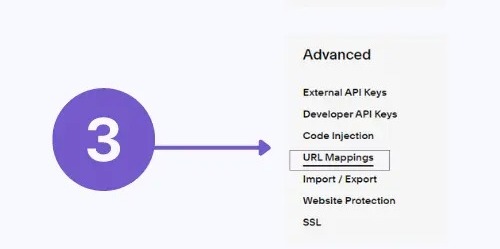URL redirection plays a critical role in maintaining the integrity of a website’s structure and user experience. When websites undergo updates, reorganizations, or changes in domain names, certain URLs may become outdated or irrelevant. In such cases, URL redirection becomes essential to seamlessly guide visitors to the new, relevant URLs, preserving both user satisfaction and search engine rankings. Squarespace, a widely used website-building platform, offers straightforward methods to implement URL redirections. In this comprehensive guide, we’ll explore what URL redirection is, the types of redirection offered by Squarespace, the significance of implementing redirection, and How to Redirect a URL in Squarespace.
What Is URL Redirection?
URL redirection, commonly referred to as URL forwarding, is a process that ensures visitors who access a specific URL are automatically directed to a different URL. This is particularly useful when pages are moved, renamed, or removed from a website. Instead of encountering a dead-end or error page, users are efficiently guided to the relevant content. URL redirection serves as a bridge between the old and new URLs, allowing website administrators to smoothly transition from outdated pages to updated ones.
Types of URL Redirection in Squarespace
Squarespace provides two main types of URL redirection:
- 301 Redirect (Permanent Redirect): A 301 redirect signifies a permanent move from the old URL to the new one. This type of redirection is crucial for maintaining search engine rankings and transferring SEO authority from the old URL to the new URL. It tells search engines that the content has moved permanently.
- 302 Redirect (Temporary Redirect): On the other hand, a 302 redirect denotes a temporary move from the old URL to the new one. It indicates that the move is temporary, and search engines should continue to index the original URL. Unlike the 301 redirects, SEO authority is not typically transferred with a 302 redirect.
Why is URL Redirection Important?
URL redirection holds significant importance for various reasons:
- User Experience: Redirection ensures that visitors are led to the right content even if they access outdated URLs. This enhances user satisfaction by preventing confusion and dead-end pages.
- Search Engine Optimization (SEO): Permanent (301) redirects help maintain search engine rankings and preserve the SEO value of the old URL by transferring it to the new URL. This prevents a loss of organic traffic due to ranking drops.
- Link Maintenance: Redirection helps in managing external links, such as backlinks from other websites, by ensuring they still point to relevant content even if the URL structure has changed.
- Marketing and Promotion: If you’ve shared or promoted certain URLs in your marketing campaigns, redirection ensures that these efforts don’t go to waste, as users are directed to the intended content.
How to Redirect a URL in Squarespace?
Implementing URL redirection in Squarespace is a straightforward process and includes the steps given below:
Step 1. Go to Squarespace Settings
- Log in to your Squarespace account.
- From the main dashboard, navigate to the “Settings” section.
Step 2. Copy and Paste the Source Page URL
- Within the “Settings” section, select “Advanced” and then click on “URL Mappings.”
- Locate the “Add URL Mapping” option and click on it.
- Paste the URL of the page you want to redirect from in the “Source URL” field.
Step 3. Add the Forwarding ‘Key’
- In the “Key” field, input a recognizable identifier (->) for the redirection purpose.
- Choose the appropriate redirection type: “301” for permanent or “302” for temporary redirection.
Step 4. Copy and Paste the Destination Page URL
- Enter the URL of the page you want to redirect to in the “Destination URL” field.
Step 5. Add the Redirect
- Click “Save” or “Add Mapping” to apply the redirection.
- Squarespace will automatically redirect visitors from the old URL to the new URL, based on the selected redirection type.
Benefits of Redirecting a URL in Squarespace
Redirecting URLs within Squarespace offers several benefits:
- User-Friendly Experience: Visitors are seamlessly guided to relevant content, preventing frustration and enhancing user experience.
- SEO Continuity: Permanent (301) redirects maintain search engine rankings and ensure that the SEO value of the old URL is transferred to the new one.
- Link Management: Redirection helps in managing backlinks and external links, ensuring they continue to direct users to valuable content.
- Time and Effort Savings: Redirection saves time and effort by allowing you to update your website without worrying about outdated URLs leading to dead-end pages.
- Marketing Consistency: Promotional efforts remain effective as redirection directs users to intended landing pages, preserving the continuity of marketing campaigns.
In conclusion, a URL redirection is a fundamental technique to uphold a seamless user experience, safeguard search engine rankings, and maintain effective digital marketing efforts. Squarespace simplifies the process of URL redirection through its intuitive interface, making it accessible even to users without technical expertise. By following the step-by-step guide provided in this article, you can confidently execute URL redirection in Squarespace and harness its multitude of benefits.
FAQs about URL Redirection in Squarespace
1. What is URL redirection?
URL redirection, also known as URL forwarding, is a process that automatically redirects visitors from one web address (URL) to another. This is commonly used when websites undergo changes, and certain pages are moved, renamed, or removed.
2. Why is URL redirection important in Squarespace?
URL redirection is crucial in Squarespace to maintain a seamless user experience when pages are reorganized, content is updated, or domain names change. It ensures that visitors accessing outdated URLs are redirected to the new, relevant URLs, preventing broken links and enhancing user satisfaction.
3. What are the types of URL redirection in Squarespace?
Squarespace offers two main types of URL redirection:
- 301 Redirect (Permanent Redirect): This type of redirection informs search engines that the old URL has permanently moved to a new location. It transfers SEO authority and ranking from the old URL to the new one.
- 302 Redirect (Temporary Redirect): A temporary redirection indicating that the old URL has temporarily moved to a new location. SEO authority is not usually transferred with this type.
4. How does URL redirection affect SEO?
Permanent (301) redirects are beneficial for SEO as they transfer search engine ranking and authority from the old URL to the new one. This helps maintain organic traffic and prevents ranking drops. Temporary (302) redirects are less impactful on SEO as they don’t transfer SEO authority.
5. How do I redirect a URL in Squarespace?
To redirect a URL in Squarespace:
- Log in and go to Squarespace Settings.
- Navigate to “Advanced” and select “URL Mappings.”
- Click “Add URL Mapping” and input the source URL and destination URL.
- Choose between 301 or 302 redirection and add a forwarding key.
- Save the settings to apply the redirection.
6. Can I change or remove a URL redirection in Squarespace?
Yes, you can edit, update, or remove URL redirections in Squarespace by going to the “URL Mappings” section in the “Advanced” settings. Simply modify the existing redirection or delete it to remove the redirection.
7. What happens to backlinks when I implement URL redirection?
URL redirection helps manage backlinks by ensuring that external links pointing to old URLs still lead to the correct content. This preserves the value of backlinks and prevents broken links.
8. Are there any downsides to URL redirection?
While URL redirection is generally beneficial, excessive redirections can lead to a slight delay in page loading times. Additionally, improper implementation or excessive changes can impact SEO if not managed carefully.
9. Can I redirect a URL to an external website using Squarespace?
Squarespace’s built-in URL redirection features are primarily designed for redirecting within the same website. Redirecting to an external website would usually require custom code or potentially using third-party tools.
10. Do URL redirections have an expiration date in Squarespace?
URL redirections in Squarespace do not have an inherent expiration date. However, it’s recommended to periodically review and update your redirections to ensure they remain relevant and accurate.






